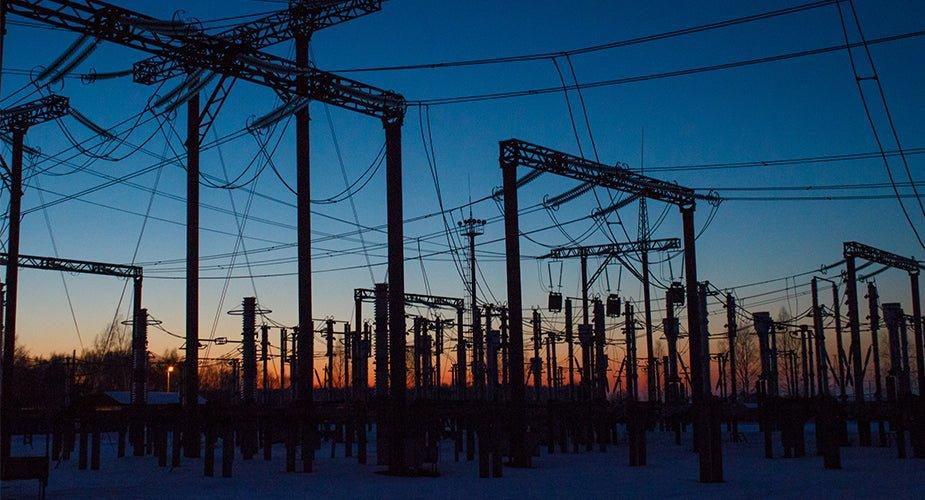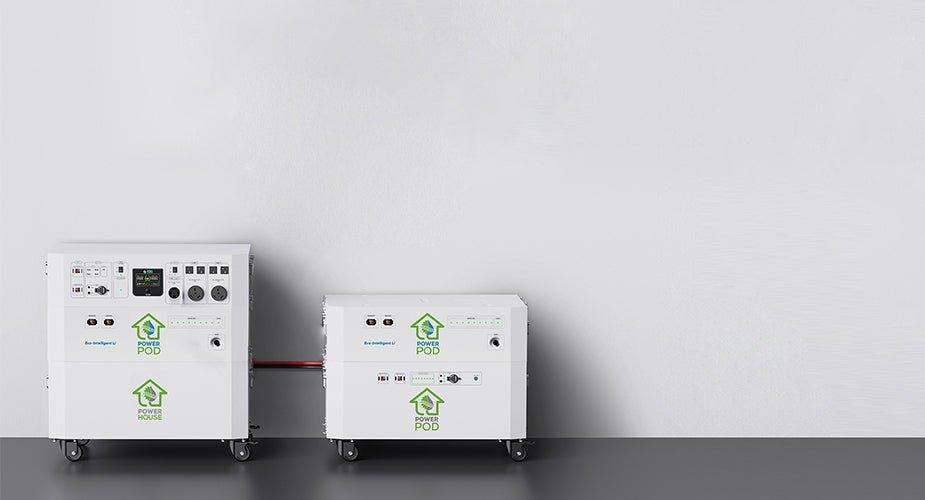When buying appliances, devices, or gadgets, one of the most common things that we read on the charger, battery and manual are the terms volts and watts. Often than not, we don’t take the time to think about them. But if you are considering on getting your own home power backup, it is highly recommended to check the volts and watts needed by your household.
This ensures that you get to pick the right home backup battery and that you’re able to prevent any form of malfunction due to incorrect volts or watts.
Volts Vs Watts: What they are and what makes them different to each other
Volts was discovered by an Italian physicist named Alessandro Volta.
And, according to Dictionary.com, volt is that standard unit of potential difference and electromotive force in the International System of Units (SI). It is the difference of electrical potential between two points of a conductor carrying a constant current of one ampere, when the power dissipated between these points is equal to one watt.
To put it simply, volts is about the electrical potential that an appliance or gadget can have.
Meanwhile, watts is a unit of measurement that is used to determine how much electricity is being used or consumed per unit of time. Basically, it is the rate of energy use over a period of time.
For example, you have a 120-watt light bulb. It will eat up 100 amperes watts of electricity but the voltage may vary depending on its wiring and electrical system.
How do you convert volts to watts?
The basic formula when converting volts to watts is:
P(Watts) = 1 (Ampere) X V (Volts)
For example, your gadget requires 120 volts and consumes 2 amps.
P = 2 X 120
= 240 watts
To get these details, be sure to check the user manual that is usually included on the devices, appliances, and gadgets you buy.
Or you may also use the following table as your reference:
5 Volts to Watts
|
Volts (V) |
Amps (A) |
Watts (W) |
|
5 V |
1 A |
5 W |
|
5 V |
2 A |
10 W |
|
5 V |
3 A |
15 W |
|
5 V |
4 A |
20 W |
|
5 V |
5 A |
25 W |
|
5 V |
6 A |
30 W |
|
5 V |
7 A |
35 W |
|
5 V |
8 A |
40 W |
|
5 V |
9 A |
45 W |
|
5 V |
10 A |
50 W |
12 Volts to Watts
|
Volts (V) |
Amps (A) |
Watts (W) |
|
12 V |
1 A |
12 W |
|
12 V |
2 A |
24 W |
|
12 V |
3 A |
36 W |
|
12 V |
4 A |
48 W |
|
12 V |
5 A |
60 W |
|
12 V |
6 A |
72 W |
|
12 V |
7 A |
84 W |
|
12 V |
8 A |
96 W |
|
12 V |
9 A |
108 W |
|
12 V |
10 A |
120 W |
24 Volts to Watts
|
Volts (V) |
Amps (A) |
Watts (W) |
|
24 V |
1 A |
24 W |
|
24 V |
2 A |
48 W |
|
24 V |
3 A |
72 W |
|
24 V |
4 A |
96 W |
|
24 V |
5 A |
120 W |
|
24 V |
6 A |
144 W |
|
24 V |
7 A |
168 W |
|
24 V |
8 A |
192 W |
|
24 V |
9 A |
216 W |
|
24 V |
10 A |
240 W |
36 Volts to Watts
|
Volts (V) |
Amps (A) |
Watts (W) |
|
36 V |
1 A |
36 W |
|
36 V |
2 A |
72 W |
|
36 V |
3 A |
108 W |
|
36 V |
4 A |
144 W |
|
36 V |
5 A |
180 W |
|
36 V |
6 A |
216 W |
|
36 V |
7 A |
252 W |
|
36 V |
8 A |
288 W |
|
36 V |
9 A |
324 W |
|
36 V |
10 A |
360 W |
48 Volts to Watts
|
Volts (V) |
Amps (A) |
Watts (W) |
|
48 V |
1 A |
48 W |
|
48 V |
2 A |
96 W |
|
48 V |
3 A |
144 W |
|
48 V |
4 A |
192 W |
|
48 V |
5 A |
240 W |
|
48 V |
6 A |
288 W |
|
48 V |
7 A |
336 W |
|
48 V |
8 A |
384 W |
|
48 V |
9 A |
432 W |
|
48 V |
10 A |
480 W |
110 Volts to Watts
|
Volts (V) |
Amps (A) |
Watts (W) |
|
110 V |
1 A |
110 W |
|
110 V |
2 A |
220 W |
|
110 V |
3 A |
330 W |
|
110 V |
4 A |
440 W |
|
110 V |
5 A |
550 W |
|
110 V |
6 A |
660 W |
|
110 V |
7 A |
770 W |
|
110 V |
8 A |
880 W |
|
110 V |
9 A |
990 W |
|
110 V |
10 A |
1100 W |
120 Volts to Watts
|
Volts (V) |
Amps (A) |
Watts (W) |
|
120 V |
1 A |
120 W |
|
120 V |
2 A |
240 W |
|
120 V |
3 A |
360 W |
|
120 V |
4 A |
480 W |
|
120 V |
5 A |
600 W |
|
120 V |
6 A |
720 W |
|
120 V |
7 A |
840 W |
|
120 V |
8 A |
960 W |
|
120 V |
9 A |
1080 W |
|
120 V |
10 A |
1200 W |
220 Volts to Watts
|
Volts (V) |
Amps (A) |
Watts (W) |
|
220 V |
1 A |
220 W |
|
220 V |
2 A |
440 W |
|
220 V |
3 A |
660 W |
|
220 V |
4 A |
880 W |
|
220 V |
5 A |
1100 W |
|
220 V |
6 A |
1320 W |
|
220 V |
7 A |
1540 W |
|
220 V |
8 A |
1760 W |
|
220 V |
9 A |
1980 W |
|
220 V |
10 A |
2200 W |
230 Volts to Watts
|
Volts (V) |
Amps (A) |
Watts (W) |
|
230 V |
1 A |
230 W |
|
230 V |
2 A |
460 W |
|
230 V |
3 A |
690 W |
|
230 V |
4 A |
920 W |
|
230 V |
5 A |
1150 W |
|
230 V |
6 A |
1380 W |
|
230 V |
7 A |
1610 W |
|
230 V |
8 A |
1840 W |
|
230 V |
9 A |
2070 W |
|
230 V |
10 A |
2300 W |
240 Volts to Watts
|
Volts (V) |
Amps (A) |
Watts (W) |
|
240 V |
1 A |
240 W |
|
240 V |
2 A |
480 W |
|
240 V |
3 A |
720 W |
|
240 V |
4 A |
960 W |
|
240 V |
5 A |
1200 W |
|
240 V |
6 A |
1440 W |
|
240 V |
7 A |
1680 W |
|
240 V |
8 A |
1920 W |
|
240 V |
9 A |
2160 W |
|
240 V |
10 A |
2400 W |
Importance of Knowing How to Convert Volts to Watts
By having a good grasp and understanding of how to convert volts to watts, you can smoothly make the decision when choosing the right home battery backup for your home and that should fit your budget.
You may want to consider Nature’s Generator Elite - Gold System can work with electronics from 12-volt power to 120-volt. It has 3 AC outlets and can deliver up to 3600-amperes watts of peak AC power. It can provide power to various devices for hours during emergency situations. At minimum, it can charge a smartphone a hundred times, power up a 32” LED TV for more or less 20 hours, or keep a refrigerator running between 13-20 hours.
But if you want to make sure that your calculations are correct we highly recommend you to get in touch with a local expert or contact us us so we can assist you.
* We want to give credit where credit is due. Professional writer, Cris Ilao, contributed research and content to this blog titled: Volts to Watts Thank you, Cris, for your contributions!






 10,000W LIFEPO4
10,000W LIFEPO4










